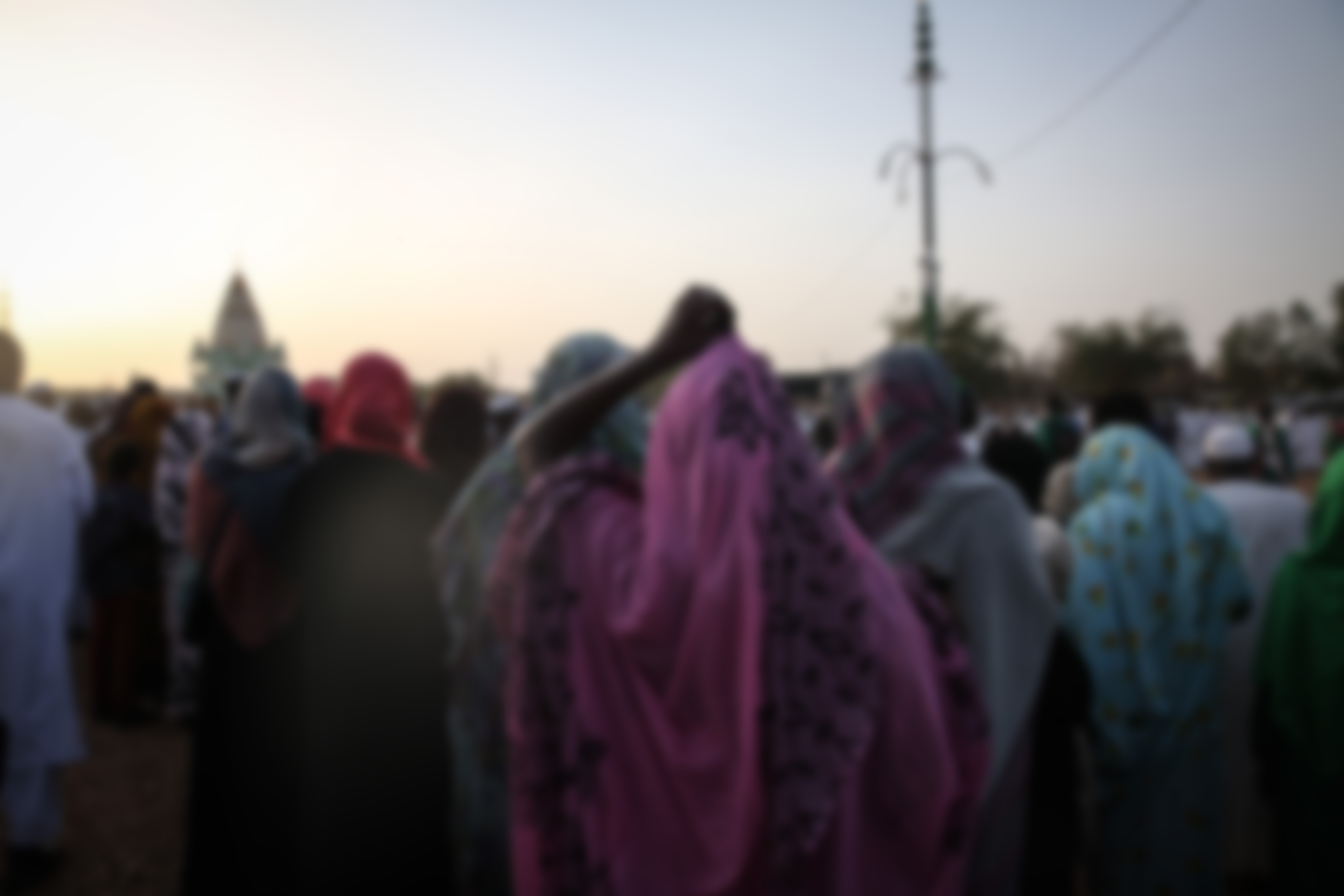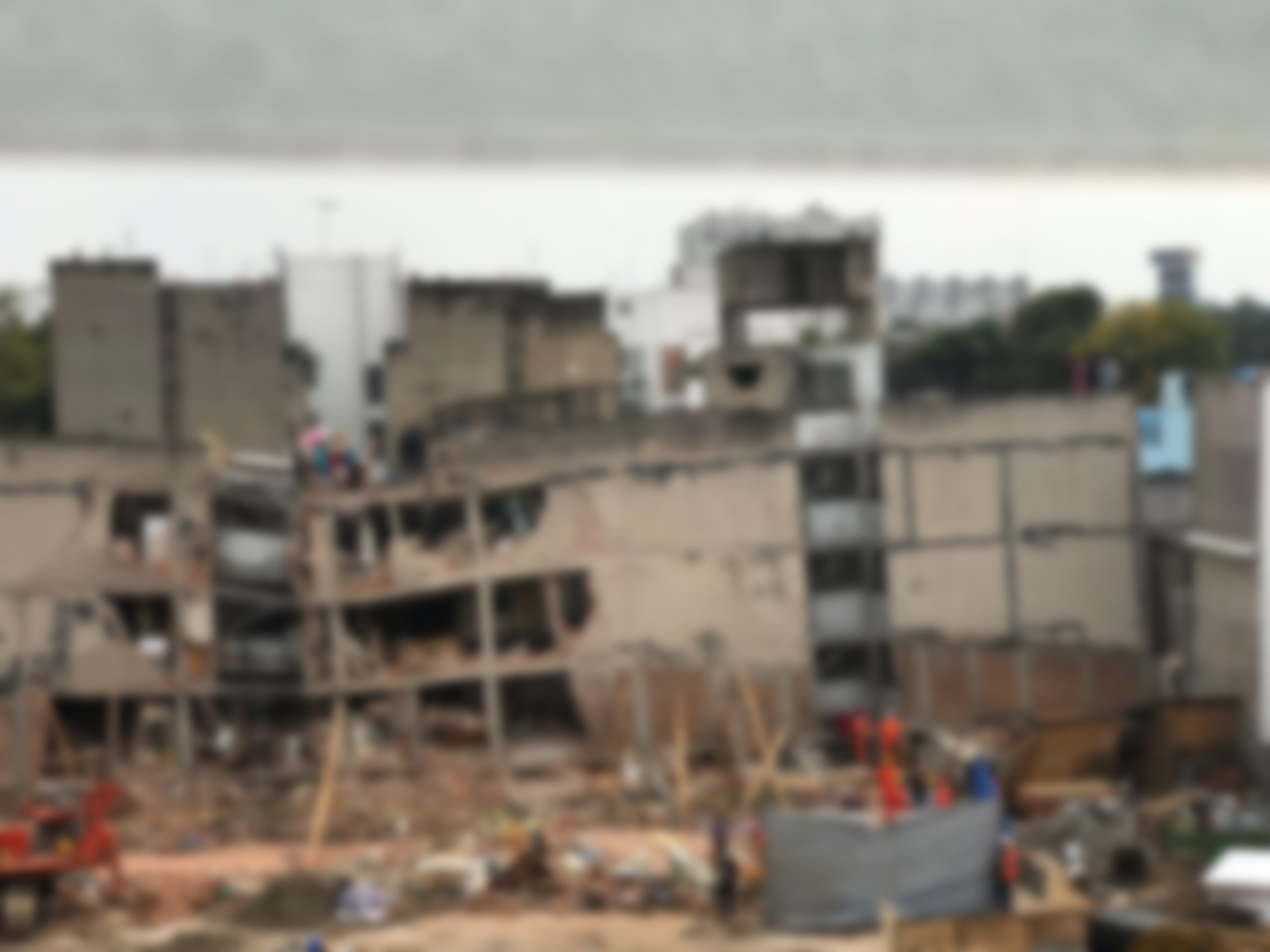On the streets and migrant paths in Ecuador, a population has arrived, looking for a new life and redefining what it means to be Latin American
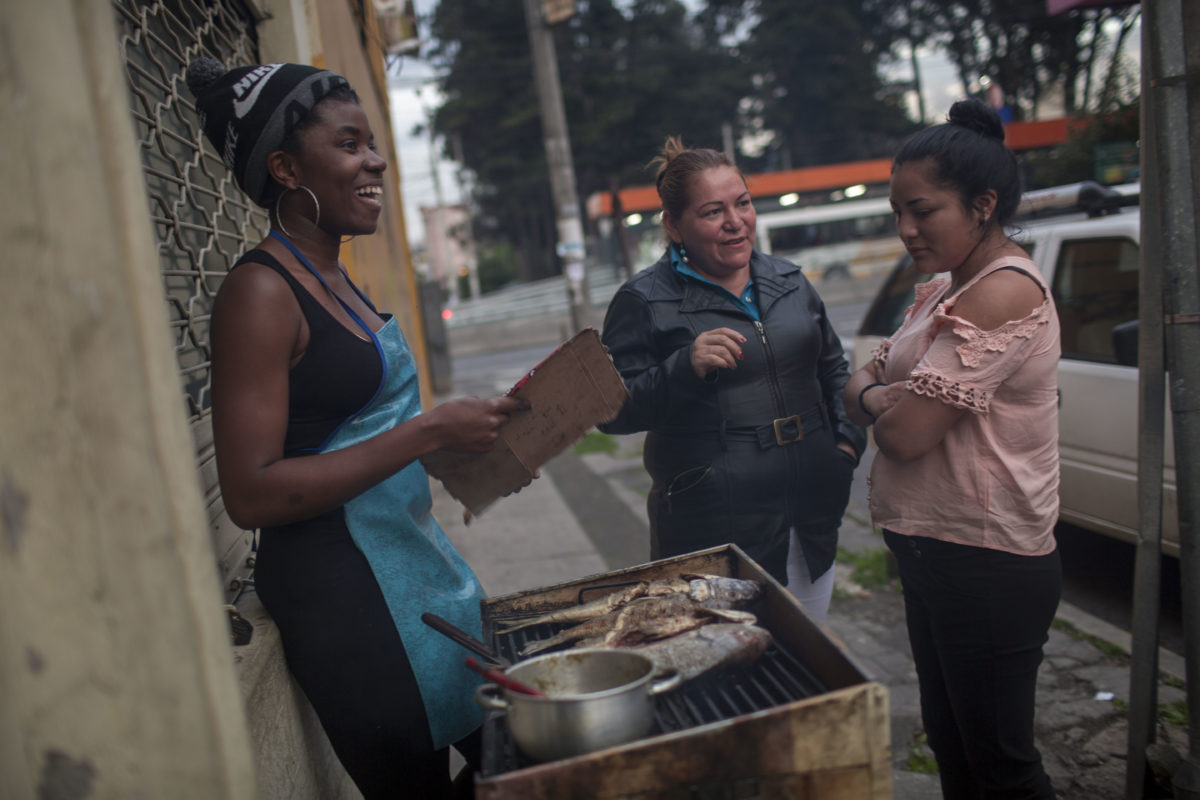
Grace, 25, an immigrant from Cameroon, works baking fish in an African restaurant in Quito, Ecuador, on 13 June of 2017. Grace has a law degree from Cameroon but can't work as lawyer in Ecuador. She has settled in Ecuador after she was denied a Canadian visa was denied in the airport. (Photo by Mauro Pimentel)
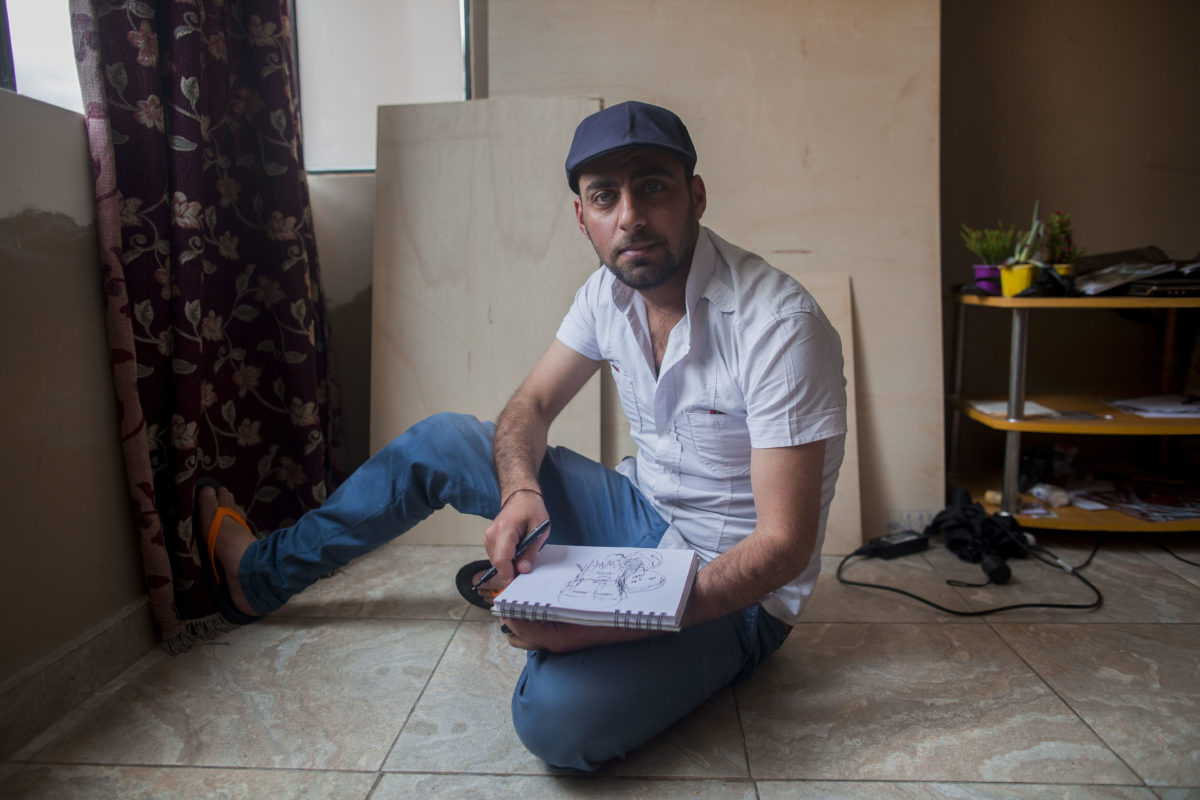
Mughni Sief, 30, an artist who left Syria because of the war, poses for a portrait inside the house he shares with another syrian refugee in Quito, Ecuador, on 16 June of 2017. Sief is claiming asylum in Ecuador. He has family members in Europe but was unable to get a visa. (Photo by Mauro Pimentel)
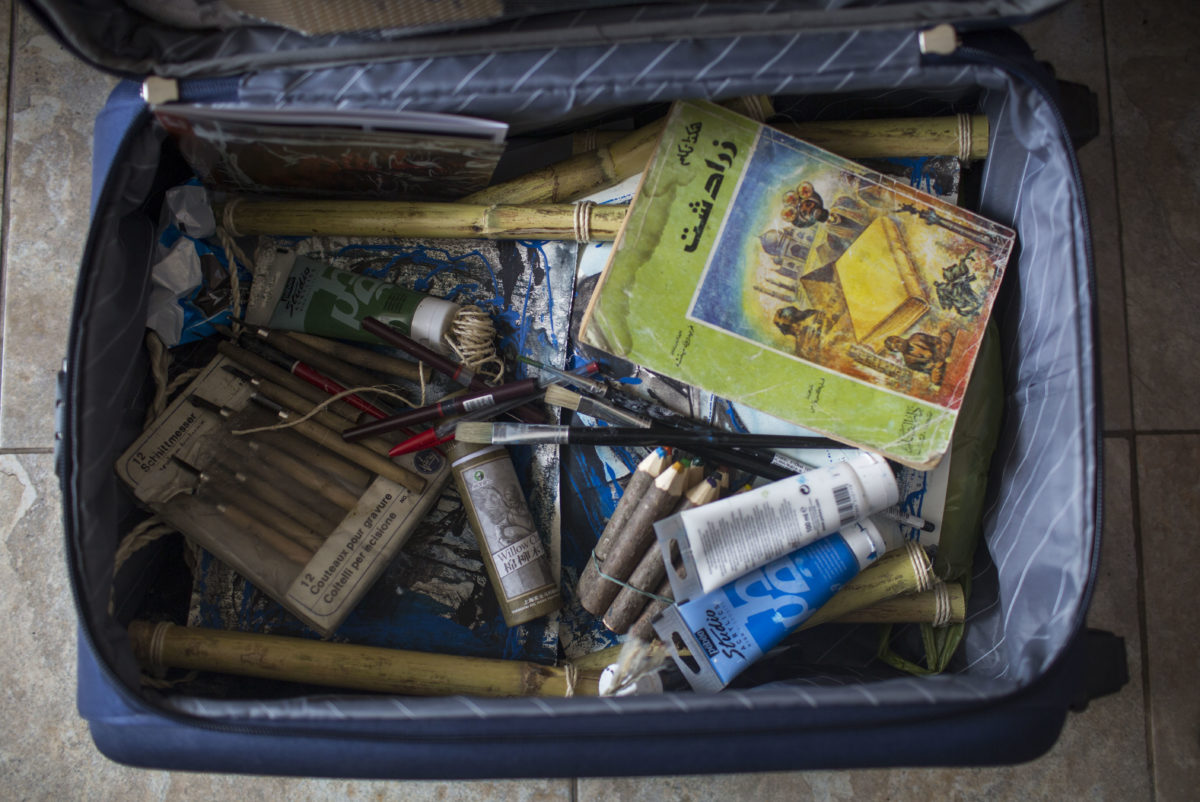
The complete belongings Syrian artist Mughni Sief, 30, that he traveled across the world with to leave war behind. Sief is claiming asylum in Ecuador. He has family members in Europe but was unable to get a visa. (Photo by Mauro Pimentel)
What’s “cereza” in Arabic?
In a bright classroom in the centre of Quito, a group of students sit around a whiteboard. “Yo veo la televisión con mis amigos en la tarde,” they repeat after the teacher, “I watch television with my friends in the afternoon.” “Yo tomo el bus para ir al trabajo,” “I take the bus to go to work.”
Around the table are two Syrians who fled the war, one Cameroonian who says he wanted to escape the Anglo-French conflict in his homeland, two Afghans, one a former top-ranking police officer, an Egyptian and a Sri Lankan who wanted to go anywhere where he could make enough money to help his family. Migrants who arrive in Ecuador from Africa, Asia and the Middle East face a steep learning curve: it might be relatively easy to enter the country, thanks to Ecuador’s liberal open-border policy, but finding work here and learning Spanish can be difficult. Today their teacher is translating between Arabic, Spanish and English. “Market”? asks one. “Souk” replies another member of the group, while a fellow student does a quick translation into Pashtu.
Experts say some of those who come through language centres like these are planning on continuing their journey north, others on staying in Ecuador.

Grace, 25, an immigrant from Cameroon, works baking fish in an African restaurant in Quito, Ecuador, on 13 June of 2017. Grace has a law degree from Cameroon but can't work as lawyer in Ecuador. She has settled in Ecuador after she was denied a Canadian visa was denied in the airport. (Photo by Mauro Pimentel)
A little piece of Nigeria, in Quito
As the night closes in, Grace, a 25-year-old law graduate from Cameroon, dashes between a barbeque out on the street and the kitchen in the small Nigerian restaurant where she is working the night shift, as a television showing an African football league plays in the background. She wears a dark top, and her hair pulled back, as she fans the tilapia grilling on the coals. When she was denied a Canadian visa, despite having a scholarship, she decided she still wanted to leave Cameroon, where she complains of a lack of jobs and opportunities for the country’s English-speaking minority.
With three friends, she bought a ticket heading west for Ecuador where she heard she could enter with her invitation to study at a language school. She soon converted to a missionary visa, and now works here, singing in the choir at a church up the hill and teaching Sunday school on the weekends. Like many of her customers, she also wants to travel north to the US or Canada, but only with the correct papers. “If you go without papers and through the jungle, you might be lost. Then my family is lost as well.”
The Afghan police officer
Asadullah, a former police officer, spent 31 years training new recruits and fighting terrorist groups in his country. Among the documents he smuggled out with him is a photograph of him with Robert Gates, the former US Secretary of Defence, paperwork from a training programme at the National Defence University in Washington DC, and training certificate from the George C Marshall centre in Europe, signed by the German defence minister.
His career had been high-profile and illustrious, but while that brought recognition from the Americans and their allies, it also brought him the unwelcome attention of the Taliban and other extremist groups.
For three years before he fled, he says terrorists were calling him saying he needed to end his work with the police. “Come and work with us,” they’d coax. When he refused, someone tried to throw acid on his child at school – that was when he decided to leave.
Today the family are renting a spacious flat in central Quito, with a big beige sofa and swept wood floors. A big TV is mounted on the wall behind him, and one of his children brings in sweet tea and fruits. His wife and six of his children are with him, awaiting a decision from the migration authorities on their asylum case. For the sake of his children – who all speak English – Asadullah wants to go to the US.
“I want to go to America, but it’s a process: it will take a lot of time,” he says. “We have been waiting to get an answer. I only came here because the bad people wanted to kill us. I’m just here so I’m safe.” He considered going to Europe, but considered the route there more dangerous. “Many Afghan people wanted to go to Europe, to Turkey, but many people died in the sea.”

Mughni Sief, 30, an artist who left Syria because of the war, poses for a portrait inside the house he shares with another syrian refugee in Quito, Ecuador, on 16 June of 2017. Sief is claiming asylum in Ecuador. He has family members in Europe but was unable to get a visa. (Photo by Mauro Pimentel)

The complete belongings Syrian artist Mughni Sief, 30, that he traveled across the world with to leave war behind. Sief is claiming asylum in Ecuador. He has family members in Europe but was unable to get a visa. (Photo by Mauro Pimentel)
The artist
Mughni Sief’s paintings once made him a well-known artist in his native Syria: he taught fine art in a top university, and was invited to Lebanon to show his work. But since the war, and his decision to flee, his paintings have taken on a darker tone. One, called “Even The Sea Had A Share Of Our Lives, It Was Tough,” touches on the horrors so many Syrians have seen as they try to flee to safety.
“This painting is about Syrians crossing the sea to go to Europe from Turkey. I put this fish head and cut the head off to show the culture of ISIS. This here is the boat people,” he explains in his spartan apartment in Ecuador’s capital, Quito. “Syria was empty of people, and there are so many people dying in the sea.”
From the windows of his bedroom-come-studio, you can see the mountains, washing hanging in the sunshine on a neighbours balcony, beige tiles. Behind him the bed sheets – which came with the house – are adorned with images of teddy bears and the phrase “happy day.”
In the corner is a small, rolling suitcase in which he brought his wood carving tools, crayons, and charcoals from Syria: everything from his old life that he dared bring without alerting attention that he was leaving the country. In a small backpack he bought a Frederick Nietshce paperback, a birthday present from a friend, and a book he bought in Syria: “Learn Spanish in 5 days”. He didn’t bring any photos, in case his bag was searched.
Frustrated by restrictions he faced as a Syrian in Lebanon, he started to research other places where he might make a new start. He read that Ecuador was “one of the few countries that don’t ask for a visa from Syrians. I had problems leaving Lebanon, and in El Dorado in Colombia but at Quito I came in no problem. The only question was: why are you coming to Ecuador, do you have money? I said nothing about asking for asylum so they just gave me a tourist visa.”
Soon after he made his asylum application, and today, he paints while he waits for a decision. “Before the war I was focused just on humans, on women, but when the war started that changed, and I began focusing on the miserable life that we live in Syria,” he says as he arranges three paintings on the bed. In one, he explains, is a woman who can’t face something in her life, so prefers to stop speaking.
Tricked
Although many of the migrants that make their way to Ecuador are able to travel more independently than those making the journey across the Mediterranean, examples abound of exploitation of some who arrive here. Mohammad, for example. He’s a 24-year-old from Sri Lanka who first tried his luck in Malaysia, but was cheated by a travel fixer who took his money while promising him a work visa that never materialized. When he was arrested for working without the proper documents, a friend had to come and pay the police to get him out. Travelling west, to Ecuador, after religious violence broke out in his hometown, he says he paid someone he knows to help sort out his travel, unsure of how much he took as a cut. When he flew in, alongside a Sri Lankan family, the agent arranged for him to be picked up by an unknown woman who charged each of them again to take them to a hostel. He is now renting a room from a man he met at the mosque. Every day continues to be a struggle, he said.
“At home, I saw so many troubles each day. I decided to come here thinking maybe things will be good. But I did one week working in a restaurant, they treated me like a slave. For three months I was searching for work. They are good people here but I have no opportunities here. Seven months I have nothing, I’m wasting my time.”





